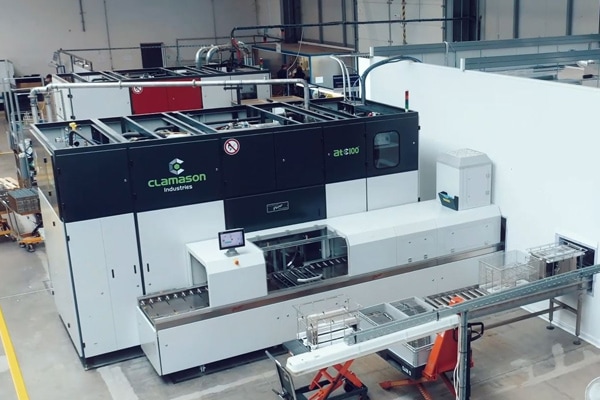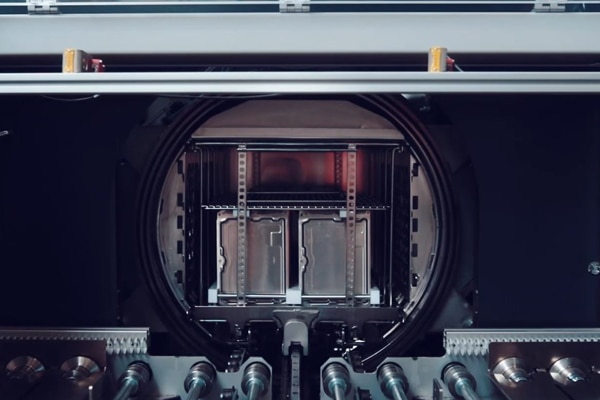18 months on from its launch, we’re celebrating the impact of Clamason’s own ATC-100 process.
In a little over a year and a half, this patented system has delivered on a promise to modernise and transform technical cleaning as we know it.
A host of tier one customers have already benefited from the technology, which was developed alongside German manufacturers PERO.
Among its many benefits are increased protection against unwelcome contaminates. This allows Clamason to provide unrivalled levels of part cleanliness which perfectly compliments the strategy of growth within the electric vehicle ECU cover sector.
The ATC-100 process complies to VDA19 standards and includes an in house testing laboratory which includes analysis such as particle size, surface free evaluation, RFU and surface tension.
Looking back on a successful rollout, Sales Director Ian Davies highlighted this new investment will give us a great opportunity for significant growth in the aluminum ECU cover market.

What difference has it made to the business in its first year?
In the first year since launching ATC100 Clamason are already providing Tier 1 customers with aluminium ECU covers with class leading cleanliness readings.
This process is allowing our customers to achieve a higher level of cleanliness of their finished units and thus reducing a risk of failure.
How did the ATC-100 come about?
Over a number of years, we could see the cleaning specifications specifically aluminium covers for ECU’s becoming more and critical with both particle size and surface tension being the 2 main areas of focus. As a result, our technical team worked with PERO to come up with the trademarked ATC100 cleaning process we are running today.
How does it distinguish Clamason from their competitors?
There are several USP’s this process has to offer, with a maximum particle size of 100um, 70+ surface tension and the controlled packing environment in our class 8 medical grade cleanroom. If you package that up there are very few suppliers that can offer a comparable process in addition to component stamping.
How long a process was it from conception through to installation?

In all it took around two years from initial conversations through to deployment in our Slovakian plant. We oversaw a soft launch initially, back in December 2021, before a proper rollout in February of the following year. This was a fantastic effort by our internal team but also our suppliers as we were in the middle of the COVID restrictions.
What has the response been from clients?
The response from our Tier 1 clients has been very positive and the particle and surface tension results are allowing them to push the boundaries of component functionality.
Do you expect its impact to grow in the coming years?
Absolutely, with the positive response from our clients we are planning to roll out our trademarked process to new projects and customers in the coming months. The aim is to replicate the ATC100 line in our Nitra plant, which is perfectly complimented by our recent investment in a GTX400 stamping press and our long term growth plans in the ECU market.
It’s fair to say this has been a successful implementation and one that further underlines Clamason’s commitment to innovation and excellence alike.
To learn more about the ATC-100 and watch our dedicated video click here.
